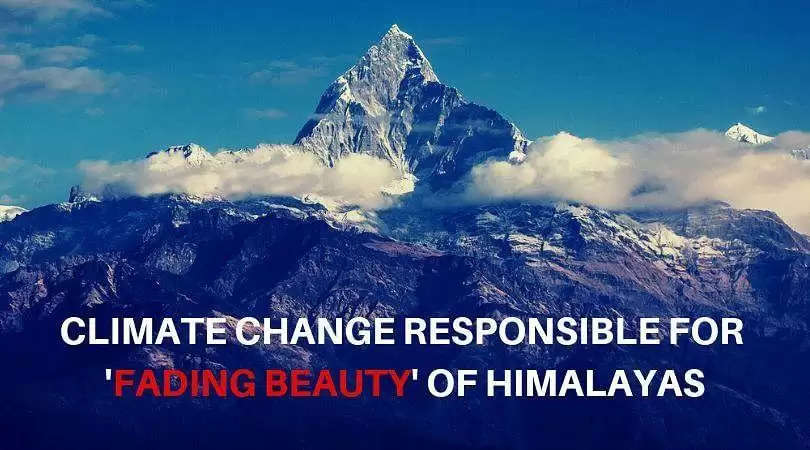Climate Change turning Himalayas grey, say experts

Skymet Weather Report | Feb 04, 2019:
Climate change is one major issue that has been haunting all of us for years now. The term is characterized as an alarming threat to places, species and people. Results are loss of sea ice, rise in sea levels and intensified heatwaves. However, even after knowing these deadly effects, we humans are still ignorant about our degrading environment.
As a result of climate change, the Himalayan beauty is fading away, as it is clearly visible by transformation in the color from pristine white to grey. What is more disturbing is even after witnessing the beauty fading away, we humans are not coming forward to do anything about it.
In a recent interview, Justice Rajiv Sharma of Punjab and Haryana High Court expressed his concern regarding the issue of climate change in Uttarakhand. He was worried how ignorant we have remained throughout years and in the present time too, not many people are coming forward to save the environment. He also emphasized that the harm we are causing to our environment will be passed on to our future generation too and the results would be deadly.
In his speech at the fourth International Dialogue on Himalayan Ecology in Chandigarh, he said: "Any policy decision we make, must be taken keeping in mind our future generation."
Devinder Sharma, Managing Trustee at Dialogue Highway discussed the causal relationship between agriculture and climate change. He stated that the Himalayas consists of 20% of the world's population. The tallest mountain range shares borders with eight countries. However, looking the present conditions, the statement looks understated. He also emphasized that we have borrowed the environment from our future generation, and that is why it is the utmost need to sustain the nature for coming years.
The Himalayas rank third in terms of storing amount of frozen water on earth. The region is also highly prone to climate change. Throughout these years, high insertion of Carbon dioxide in the air has resulted in depletion of Himalayan beauty.
According to studies, due to significant rise in temperatures, the Himalayan Glaciers at the lower level are losing water at a higher rate than those situated on the upper levels, thereby causing different types of water risks in these regions.
Suresh Kumar, Punjab Chief Principal Secretary said 'Agriculture crisis are also the results of climate change'. He expressed his concern on the need for sufficient agricultural lands and efficient measures that must be kept in mind ahead of G20 Summit on climate change.
Vice Chancellor of G.B. Pant University for Agriculture and Technology, Tej Pratap discussed upon deadly effects of this climate change. 'The effects would be witnessed in the form of warm winters, less amount of snow, irregular rains, drought conditions and many more', he said.
According to Harjeet Singh, Manager International Climate Policy 'there's a growing global need for changing agriculture and climate policies, by looking at present scenario'.

















